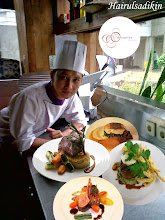A glass of good wine paired with a lamb dish brings out lamb’s luscious, mild flavor and makes it absolutely scrumptious! But most of the time, we are confused regarding what type of wine to be paired with a lamb dish. Is it the reds, the whites or the roses? Generally or to be precise some red wines and not all its varieties go perfectly with lamb dishes . Avoid oaky wines. Mostly French Bordeaux, Spanish Rioja, Italian, Cabernet Sauvignon or Merlot are paired with lamb dishes.
History of Lamb and Wine:
Pairing of lamb and wine draws its inspiration from the European traditions. In the present day also grazing sheep and planting vineyards form an important part of the European lifestyle. Perhaps this is the sole reason behind pairing the best of Europe’s wines with American lamb dishes.
Perfect lamb dish and wine pairing:
However, the wine selection generally depends cuts and its preparation. For example, Shiraz, Cabernet Sauvignon or Merlot tastes perfect with American Lamb and slow lamb dishes. A Moroccan lamb with Rioja or lamb salad dishes with Sauvignon Blanc are winners! Again a glass of chilled dry rose with grilled lamb and vegetable kabobs makes a deadly combo. The options are endless.
However, I believe that there are no set rules for pairing wine with lamb dishes. It’s all about a good instinct and creativity.
Pairing Italian wine with italian food
the rich flavour of lamb needs wine High in acid or Tannin to cleans the palete
Nebiollo ( italian grapes ) and the wine are Barrollo and Barbaresco, all of this wine tend toward a bouguet of violet,smoke and rose-like perfumes with flavors of truffle,fennel,licorice, and tar.
the sweetnes of lamb and the acidity in the wine get maried in your mouth and make no plan for divorce.
Nebiollo is genarally the lighest of three,but it is never a light wine, Barbaresco is the middle weight.
Pairing French wine with French food and American wine
a savory red meat like lamb also goes well with savory red wines like Red bordeaoux from france or cabernet sauvignon from America,
but all thing deepen on 3 principal namely 1.Tastes include ( Sweet, Salt, Acid, Bitter, Oil, and Tannin.),
2.Flavors…(.Fruity, Floral, Herbal, Spicy, Earthy, Nutty, Oaky, Meaty…the list goes on! ),
3.Texture…( Light-Bodied, Medium-Bodied, Rich, Round,)
4. in additional Cooking Method & Ingredient included
SAMPLE-PAIRING
* lamb kefta with yoghurt mint sauce/Salsa Verde goes well pairing with Rose or Red bordeaux/Carbenet sauvignon
* lamb with herb crust / provencal with Red wine sauce goes well with PinotNoir/ Australian syrah ( fruity)
* Marocon lamb prune on tajine with au jus also goes well with Pinotnoir
* Grilled lamb chop with blackpeper sauce goes well with Syraz from cool climate/french
* Grilled lam chop with Bbq sauce combine with cajun spice goes well with Red Zifandel
* Blackened lamb chop with coriander and cumin powder company with lamb au jus goes well Pinot Noir/Red bordeaux/Australian syrah
* Whole lamb leg/lamb shank with Rosemary lamb gravy the same above...Etc
History of Lamb and Wine:
Pairing of lamb and wine draws its inspiration from the European traditions. In the present day also grazing sheep and planting vineyards form an important part of the European lifestyle. Perhaps this is the sole reason behind pairing the best of Europe’s wines with American lamb dishes.
Perfect lamb dish and wine pairing:
However, the wine selection generally depends cuts and its preparation. For example, Shiraz, Cabernet Sauvignon or Merlot tastes perfect with American Lamb and slow lamb dishes. A Moroccan lamb with Rioja or lamb salad dishes with Sauvignon Blanc are winners! Again a glass of chilled dry rose with grilled lamb and vegetable kabobs makes a deadly combo. The options are endless.
However, I believe that there are no set rules for pairing wine with lamb dishes. It’s all about a good instinct and creativity.
Pairing Italian wine with italian food
the rich flavour of lamb needs wine High in acid or Tannin to cleans the palete
Nebiollo ( italian grapes ) and the wine are Barrollo and Barbaresco, all of this wine tend toward a bouguet of violet,smoke and rose-like perfumes with flavors of truffle,fennel,licorice, and tar.
the sweetnes of lamb and the acidity in the wine get maried in your mouth and make no plan for divorce.
Nebiollo is genarally the lighest of three,but it is never a light wine, Barbaresco is the middle weight.
Pairing French wine with French food and American wine
a savory red meat like lamb also goes well with savory red wines like Red bordeaoux from france or cabernet sauvignon from America,
but all thing deepen on 3 principal namely 1.Tastes include ( Sweet, Salt, Acid, Bitter, Oil, and Tannin.),
2.Flavors…(.Fruity, Floral, Herbal, Spicy, Earthy, Nutty, Oaky, Meaty…the list goes on! ),
3.Texture…( Light-Bodied, Medium-Bodied, Rich, Round,)
4. in additional Cooking Method & Ingredient included
SAMPLE-PAIRING
* lamb kefta with yoghurt mint sauce/Salsa Verde goes well pairing with Rose or Red bordeaux/Carbenet sauvignon
* lamb with herb crust / provencal with Red wine sauce goes well with PinotNoir/ Australian syrah ( fruity)
* Marocon lamb prune on tajine with au jus also goes well with Pinotnoir
* Grilled lamb chop with blackpeper sauce goes well with Syraz from cool climate/french
* Grilled lam chop with Bbq sauce combine with cajun spice goes well with Red Zifandel
* Blackened lamb chop with coriander and cumin powder company with lamb au jus goes well Pinot Noir/Red bordeaux/Australian syrah
* Whole lamb leg/lamb shank with Rosemary lamb gravy the same above...Etc



















